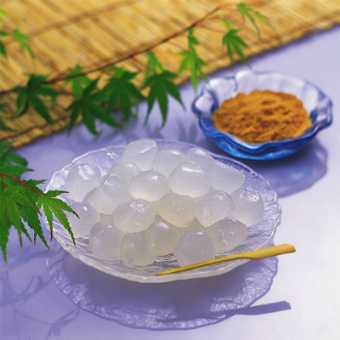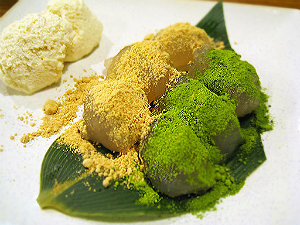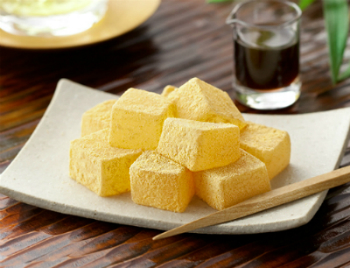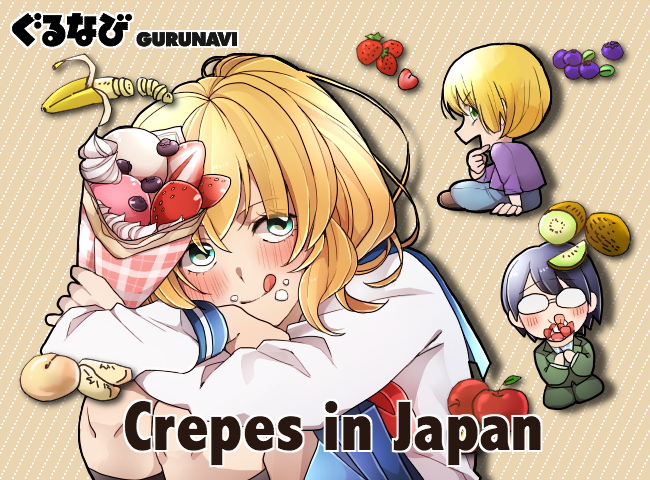Warabimochi | Articles on Japanese Restaurants | Japan Restaurant Guide by Gourmet Navigator
Warabimochi Summary

Warabimochi is a Japanese sweet made from starch, water and sugar. Its name originated from using starch flour from the roots of bracken. During the Heian period, there was a legend that Emperor Daigo bestowed his favorite warabimochi the rank of "Dayu", hence warabimochi is also called Oka dayu.
Wasyoku(Japanese Cuisine) encyclopedia : Warabimochi

There was also a saying that it was used as emergency food for the farmers when faced with a poor crop harvest. It is well-known that warabimochi is a specialty of Nissakashuku of Tokkaido (now known as Nissaka in Kakegawa city in Shizuoka prefecture). Nara prefecture is famous for its bracken starch, hence you can see many warabimochi specialty shops in Nara and neighbouring Kyoto.

Warabimochi with fillings has been popular in Kyoto since a long time ago, and usually eaten with soybean flour and brown sugar syrup. Its translucent appearance has a cooling effect and hence commonly used in summer desserts. Kuzumochi (arrowroot starch rice cake) in Kansai has a similar recipe, by heating starch, water and sugar and stirred till it becomes a clear mixture, from which bite-sized round portions are cooled and hardened. Bracken starch is taken from its roots, washed and dried to produce fine starch flour, but compared to the same extraction method of arrowroot starch, it is a cumbersome process and produces lesser yield, hence there are now fewer manufacturers.
Only 70g of starch can be extracted from 10kg of bracken roots if done manually, and the tedious process during extreme winters such as digging the roots and immersing in cold water can take more than 10 days to complete. Instead of bracken starch flour, starch from sweet potatos and tapioca, or even arrowroot starch are used in most present warabimochi, and only the rare and upscale products use real bracken starch. The usual warabimochi seen have a clear texture, but if original bracken starch is used, they should be slightly brown, which may change color and harden when kept in refrigerators.









